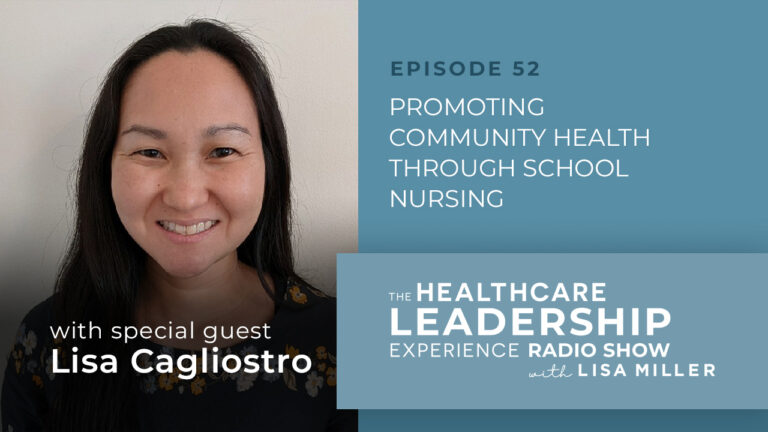Why focusing on construct rather than benchmarking is the most effective way to engage physicians in cost awareness.
In Episode 43 of The Healthcare Leadership Experience, Bryan Covert, Managing Director of VIE Healthcare, to discuss Physician Preference Item (PPI) initiatives and physician collaboration.
As Bryan observes ‘It’s really difficult to negotiate one contract for a PPI category and expect it to work for a number of different organizations because everybody is in a different position.’’
This episode is sponsored by VIE Healthcare Consulting®, which has proudly helped hospitals save $772 million since 1999.
In This Episode You’ll Hear:
- The three biggest challenges for hospitals starting their PPI initiatives:
- Data analysis.
- Physician engagement.
- Managing vendor contracts.
- Understanding why data analysis becomes an obstacle to cost savings. ‘… it’s not getting a utilization report from the vendor, it’s going through your PO detail report. It’s pulling in bill only data, it’s pulling in reimbursement data and then categorizing the data.’’
- Why focusing on construct rather than benchmarking is the most effective way to engage physicians in cost awareness.
- The physician’s relationship with the vendor: why it matters and how to manage it.
- Uncovering hidden construct costs: the use case that revealed the contractual inclusion of unused patellae in every total knee case.
- The one tip to ensure thorough preparation for physician engagement. ‘’We have all of the data organized, cross labeled, and the subcategories. We can answer any question, we’re so prepared.’’
- The 3 Cs to ensure successful implementation of PPI strategies for cost management.
- The challenge of new item creep. ‘’We’re seeing a whole wave of new products and innovation in pacemakers CRM, new products coming in, differentiating themselves at much higher price points. How are these getting contracted in, how are you deciding what to pay?’’
- Don’t wait for contract renewal! Why healthcare organizations need to carry out quarterly analytics reviews on every single PPI category.
What To Do Next:
- Subscribe to The Cost Advantage for Healthcare Leaders and receive a special report on 15 Effective Cost Savings Strategies
- Learn more about the simple 3 step process to work with us.
- If you are interested in learning more, the quickest way to get your questions answered is to speak with one of our margin improvement experts. Schedule a call with our team.
Connect with Lisa:
📱 https://www.linkedin.com/in/lisamiller/
Episode Transcripts
CLICK HERE TO DOWNLOAD THE PDF TRANSCRIPT
CLICK HERE TO OPEN THE TRANSCRIPT
Introduction (00:02):
Welcome to the Healthcare Leadership Experience Radio Show with your host, Lisa Miller. Lisa is an entrepreneur, inventor, advisor and founder of VIE Healthcare Consulting, the leading healthcare advisory and analytics firm, helping hospitals accelerate their margin improvement goals. Lisa loves to think differently and collaborates with leaders and their teams to solve challenges and to create new innovative approaches that impact the clinical and business side of healthcare. Our show will bring you leaders and innovators within healthcare and across multiple industries. Be a part of the discussion that will give you a unique perspective, deep insights and roadmaps to successfully help you navigate the clinical, financial, and operations of healthcare. Your show starts now.
Lisa Miller (00:49):
Hello, this is the Healthcare Leadership Experience Radio Show on HealthcareNOW Radio. Today, I’m joined with Bryan Covert, who is managing director at VIE Healthcare and an expert on physician preference items and those physician influenced items as well in a hospital. So today we’re going to be speaking about how to collaborate and work with physicians and your internal teams on physician preference initiatives. So Bryan, welcome to the show.
Bryan Covert (01:23):
Thank you, Lisa. Happy to be here. It’s a very important topic.
Lisa Miller (01:30):
I agree. It was just a great lead in because it is a very important topic for a number of reasons. It’s a significant driver of cost for a hospital, the physician preference items or physician-driven spend. And the goal is to really have hospitals work together with their physicians, not just working with them when the need arises. So there’s a playbook, there’s a way to continuously work with physicians.
So I have a number of questions for you. You work on a lot of these initiatives. For over 10 years, you really have honed a very unique expertise. So I want to begin with, what do you see as the three biggest obstacles for hospitals when they are starting their physician preference item initiatives?
Bryan Covert (02:17):
That’s a great question. I think there are definitely three big areas that really drive these engagements. And the first is the data analysis, and it’s very important. It’s the foundation of the entire initiative. You need to have a clear picture of what’s being used, what you’re purchasing, how they’re being used in the case. This could be time consuming and really slow the analysis down. I think this is the first area where working with a consultant who works in these initiatives frequently can really help speed this up, get an accurate analysis, and get your project going faster.
Bryan Covert (02:54):
The next area that’s really important is physician engagement. And these all tie together because the data analysis is going to lead into the physician engagement. You need to establish credibility with accurate analysis and insight, provide clear data that’s concise and makes sense to the physician. And then using both of those, the data analysis and the feedback from the physicians to come up with a uniform strategy for engaging your vendor. You need to bring all of this together so that you have support, not just from the physicians, but from C-suite and supply chain so that it’s a uniform strategy that you’re coming to the vendors with and everybody’s engaged.
Lisa Miller (03:32):
So can we talk a little bit about those three steps? So, number one is the analysis. I think even deeper into why this becomes an obstacle is the amount of data that’s truly needed in order to perform an accurate landscape and analysis and a perspective because it’s not getting a utilization report from the vendor, it’s going through your PO detail report. It’s pulling in bill-only data and it’s pulling in reimbursement data and then categorizing the data, subcategorizing it. So if you’re doing orthopedics, is it reconstruction? The primary cases by physician, even by insurance provider. I mean to do this analysis accurately with the absolute best outcome — and that will set you up for success with the physicians and whether it’s internal in the OAR supply chain or at C-suite, you’ve got to put all these pieces together.
Lisa Miller (04:34):
And what happens unfortunately, it is a massive undertaking and usually the daily responsibilities gets put off…or worse yet. Let’s just look at a part of it. And we won’t look at profitability right now or they’ll take some component out. We won’t pull the bill-only data. This is what I see, is one of the biggest problems that even getting initiative off. It’s the magnitude of the data analysis. It’s the biggest areas expense for our hospital. So time should be invested. And if you can’t invest the time, how do you get resources to invest, to help with that?
Bryan Covert (05:12):
That’s an excellent point, because that’s what really needs to be done. Looking at the purchase order history, getting that detail, looking at the reimbursement, pulling that data, looking at bill-only’s, understanding not just what they’re buying, but how they’re using it in the cases.
Lisa Miller (05:28):
Right. So you present nearly almost everything by construct by physician. So you’re having these interesting different conversations, whether it’s with supply chain or the OAR or the C-suite preparing them that this is the analysis, it’s by construct, you’re able to explain to everyone internally how the physicians are using their physician preference items in surgery, different discussion than having a PO detail report and going down by product line and saying, “This is the price we pay. This is what an outsource benchmarking company or a GPO says we pay.” That’s a completely different conversation and outcome, right?
Bryan Covert (06:07):
100%, because that’s how the physicians are looking at it. They don’t understand I’m buying this SKU with this femur. They understand this is the construct, this is the knee I’m buying. This is what it looks like. And when you pull that apart and look at it that way you start to get other insights. You could have a great price on revisions, but when you start using those revision tedious in the primary cases, you could be adding $1000, $2,000 to your primary cases. And that’s a much better discussion to have with physician rather than benchmarking. They do want to see benchmarking. They want to see how they compare to the market, but they want to see that from the perspective of the constructs they’re using, how does my case cost compare to the market? How does my case cost or my construct cost compared to the other physicians who are using different vendors at the same organization? And then what’s my profitability look like on these cases? That’s what they’re interested in.
Lisa Miller (07:00):
Absolutely. And I’m just going to comment on number two and three of the biggest obstacles. The second is putting this together in such a way, having a deck or information in such a way that your internal stakeholders feel good about this, right? You don’t want anyone like, “Oh, I don’t feel like this going to work.” Sometimes mindset is everything. So explaining it to the OR director, explaining it to if it need be those OR nurses in the case, the C-suite, CFO, COO and supply chain. So they’re like, “Oh wait, that makes sense. I am fully on board. That has to happen.” Like you said, you get in front of the physician if you’re doing all this work and putting this together, you’ll have a different kind of conversation with the physicians.
Bryan Covert (07:44):
Yeah, absolutely. It’s so important to understand when you go into those meetings with the physicians, especially when you’re coming in from supply chain, that these doctors probably have a stronger and closer relationship to the people they’re working with closely in the OR day in, day out, than they do with supply chain at the hospital, and that’s the vendor representatives for the implant companies. They work together. They depend on them. They’re very important to the OR running on time, running successfully. So they do have strong relationships. So when you go into these meetings with the physicians to get support on your cost savings initiatives, you have to have your information properly put into a deck so they can understand it, so that they can support it and bringing them insight so you can gain credibility.
Bryan Covert (08:27):
We were working on with a client who had really excellent total knee and total hip pricing. And we’re working on that engagement with the orthopedic surgeon. And even though the benchmarking data said they have very good pricing, when we dove into what they’re actually using in the cases we found that the whole contract was negotiated with the assumption that they’d be using a patella in every total knee case. And this surgeon was never using a patella.
Bryan Covert (08:54):
So even though the benchmarking said they had excellent pricing, we were able to take that cost of the patella out of that construct cost and then give them a pretty good reduction on their total needs. That was a strategy that the physician had no awareness of how that contract was put together, what they’re being charged that he could get behind because you know, it made sense.
Lisa Miller (09:17):
So that’s a great use case as to why you need to look at these cases by contract, by construct, and benchmark, but put it all together. And we’re always about saying, “Listen, you’ve got great pricing. This is great.” And I remember the example, there was no opportunity. But the fact that your curiosity into how you approach these initiatives, Bryan, makes you very unique and I think many advise as well, and really trying to put together all the different pieces of the puzzle. And like you said, you went to the physician, showed the physician, and this is not a point of conflict or difficult conversation to say, “But wait a minute, this contract was put together with the tibia. You’re not using the tibia, so we need to renegotiate it.” And that was very successful initiative. In fact, you were also able to get a credit.
Lisa Miller (10:07):
And I think that’s the difference when we’re working on an initiative, is how we look at everything. Of course, benchmarking is important that there’s so much more at a benchmarking. It really is this thinking, and you always say it like, “Where’s the money in this?” Thinking about it differently. Typically, there is cost takeout or what’s this contract about? And you are always about putting the pieces together. And I think that’s a big differentiator, just line item, just benchmarking. And we love line items. We love looking at that analysis, but how you put the contract together, how you put the utilization together, what’s the real life use? I think that’s the difference.
Lisa Miller (10:50):
And like you said, it matters with those physician conversations then you build trust. And then next time when you come to them bringing something else they’re like, “Okay, well, this is a person I have respect for. I have a trust for,” they’re looking at the data accurately. So I think that’s really important.
Lisa Miller (11:06):
If you’re just tuning in, you are listening to the Healthcare Leadership Experience Radio Show on HealthcareNOW Radio, and I’m Lisa Miller, your host. This show is sponsored by VIE Healthcare Consulting, the leading healthcare advisory and analytics firm, helping hospitals accelerate their cost savings and margin improvement goals. We’ve been helping hospitals since 1999 and you can learn more about VIE Healthcare @viehealthcare.com.
So Bryan, what do you find is the most successful process in having these physician conversations, these physician presentations? Because ultimately after the data analysis and really getting a strong analysis together, this becomes probably the big area. This is the moment of truth, you’re presenting everything to the physicians. What’s that successful process look like for you?
Bryan Covert (11:56):
For me, the most successful process I think is at this point, we have all of the data organized, cross-labeled and the subcategories. We can answer any question, we’re so prepared. But what I like to do is keep that presentation as short as possible. There’s issues such as the patella that we talked about, expensive revisions in a case billing issues that they’re not aware of. Yeah, of course we’re going to make them aware of those, but we’re just going to show them high level. Here’s what you’re using. Here’s some ideas of different strategies that we could use to get you there, but then sit back and make the most of that time by really listening to the physician and collaborating because we already know everything that the data’s going to tell us. What we don’t know is the information we’re going to get from the physician.
Bryan Covert (12:40):
So we need to use that time to listen, to get as much insight as possible from the physician, to understand maybe why things were contracted the way they were in the past, what was happening previously, what’s happening now? And then most importantly, what’s happening in the future? It’s going to do you no good to negotiate constructs if in four months that physician is going to be using a different femur or a different construct. We need to understand where they’re headed, and that’s where you get that information.
Lisa Miller (13:07):
And that’s a really good point because how many times has that happened in those conversations that you’re showing historical perspective which is very important and you’re presenting those opportunities. You understand the physician utilization, but all of a sudden you see something that may trigger, this may go differently and then having that conversation, the physician said, “Yes, I probably will now be pivoting and using this new construct.” And had not had that insight or not had that ability, that foundation to have the conversation with the physician, you lose a lot in that.
Lisa Miller (13:42):
And I love what you say is this organization of data in this probably four to five deck presentation has to be concise. It’s got to get to the point because you can’t waste the physician’s time. And ideally, we want to say, “Listen, we’ll have a 15-minute conversation. We’re going to get through everything. We’ll send you that deck before, you can review it.” What ends up happening is it probably goes to about 20 minutes or half an hour because there’s so much conversation. The physician wants to have the conversation, right?
Lisa Miller (14:12):
We love talking to physicians. We never get, “This is horrible. This is terrible, I don’t want to do this.” Physicians want to do it, they were trained to do, which is care for patients. They want to be on the side of helping the hospitals be efficient and cost efficient, but you’ve got to honor their time and honor the fact that they’re going to come from a scientific perspective, they’re in surgery, they’re doing their work. We’ve got to bring this in a way that honors how they work and the cases like you said earlier.
Lisa Miller (14:45):
So Bryan, I have a couple more questions for you. So we’ve talked about the three Cs, which may have been in the four Cs when you’re speaking to a physician, but what are your three Cs as you’re preparing your mindset and your framework when you’re ready to speak to a physician?
Bryan Covert (15:04):
Heading into that physician conversation, we definitely want communication, and that’s communication from us having more organized data, ensuring that we can answer any question that they have and then collaboration with the physician to understand their needs, current and future, to understand their comfortability with their vendor, what products they like, what products they don’t like, how they feel about the initiative moving forward. Are they open to a potential change? Are they not open to a potential change? Are they going to support the initiative because they believe it’s fair that supply chain is approaching the vendors with a market driven data driven, fair approach?
Bryan Covert (15:41):
And yeah, they’re more likely to support that initiative. And that’s the last point is confidence. Do they have confidence in the approach that’s going to generate the outcome that they’ll put their weight behind it? And we need everyone to have confidence in the approach. So making sure that there’s a strategy that fits the organization is key for confidence, because there’s really not one strategy that fits all. It’s really difficult to negotiate one contract for a PPI category and expect it to work for a number of different organizations because everybody is in a different position.
Bryan Covert (16:13):
You could have one surgeon doing 80% of the volume. At an individual standalone hospital, they use the same four constructs. They’ve used the same vendor for 15 years. That’s a really different approach and strategy than coming into an IDN where you have hospitals that have been recently purchased, people who are new to the organization, you have 20 different surgeons or more using seven different vendors. It’s a completely different approach. And even within the same vendors, they could be using vastly different levels of constructs for knee or hip or taking completely different approaches to correcting a spinal issue.
Bryan Covert (16:49):
That’s why that communication and collaboration is so important to driving and that confidence because you need to understand what everybody’s position is and come up with a strategy that can work as best as it can for everybody involved. And it could be standardization of vendors. It could be driving that utilization down from seven vendors to three or from three to one. Obviously that’s probably everybody’s first instinct when we’re looking at any kind of thing in purchasing, but it also could be standardization of pricing across all vendors, coming up with a pricing program that ensures that we may be using seven different vendors but if they participate with our program and supply at our hospital, they’re going to meet pricing relative to what that construct offers.
Bryan Covert (17:33):
And then within that same standardization, what’s the best approach to that pricing standardization? Is it defining constructs or is it defining components of constructs or going by approach? I mean there’s different ways in there and it could really differ based on the current state of what’s being done in that feedback from the physicians.
Lisa Miller (17:51):
Absolutely. That was a great explanation Bryan. What I wanted to talk a little bit about is the all play. It’s the standardization of pricing. When we say standardization of pricing, we mean it to the letter of that meaning, and it’s not 90%, you have three vendors and one vendor it’s 90% one tier, second tier, third tier. There’s no tiers. There’s nothing like that. It’s also very hard for a hospital to manage that, having a tiered program versus a pure pricing standardization, which is fair.
Lisa Miller (18:30):
If you want to be here at the hospital supporting the physicians, then this is fair price point market competitive. This is done outside of healthcare. We love this approach. And from there, hospitals can look at standardization of vendors, but I do feel like in the purist form standardization or pricing without a tiered structure or without a market share commitment is the best fair structure. That’s what we are here, we’re advocates for hospitals, not only in helping them get the best pricing collaborating with physicians, but making it easy for them to do business.
Bryan Covert (19:10):
Yeah, absolutely. And that’s what we talk about having a uniform strategy that works for everyone involved. Sometimes when you do a capitated program, you make it really difficult on materials management, because now they have to completely convert all of these items build in the material system, these caps, and then you make it difficult on AP because instead of having your system check the item master price of a single item versus what was purchased. Now you have this case cost that have five or six items, and then who’s responsible for checking to make sure that the cap that the vendor states they’re billing you on is the actual cap that goes along with the items that are being supplied?
Bryan Covert (19:51):
So it can create a whole host of issues. So we always want to make sure that we’re putting a strategy together that works for materials, that works for supply chain, that the physician support, and that is completely backed by C-suite to make sure that the negotiations going strongly as possible.
Lisa Miller (20:07):
Great point. Bryan, I’m going to put you on the spot a little bit, right? So let’s say you were working in a hospital, large IDN, and your job specifically was to manage physician preference items, we’ll say work offer, but big, big responsibility, large system. Your job is to do all components of managing physician preference items that could be from inventory to pricing, to relationships and contract management. And so you’re thinking about this, you’ve put pricing in place. What do you think is the most important thing or aspect if you’re the pilot of this project you’re running this or the quarterback of PPIs?
Bryan Covert (20:54):
Well, I think once you execute your PPI strategy, you have your savings in place, ideally you have to standardize pricing down to the item that fits into the construct. It’s easy for materials to manage. It’s easy for AP to manage, to ensure you’re paying the correct price, but you also still need to… I would probably quarterly review my purchases to just make sure that the case costs are where they should be, that there’s not new item creeped. You want a contract and put terms in your contract so that vendors can’t just introduce new items.
Lisa Miller (21:29):
But it happens. It happens. It’s remarkable. It still happens. But I agree. I don’t mean to interrupt you, but I entirely agree. New item creep is an enormous problem.
Bryan Covert (21:41):
Yeah. And new items being brought in once this category has been negotiated, they should go through the proper committees and channels. They should get the proper price supply to them and then added to the agreement to make sure they’re in the system. But we do see that, right?
We see hospitals who negotiate fantastic total joint contracts. I saw one recently where the vendor updated their item numbers and just completely caused a contracting disconnect between liners for the knee, the poly inserts and the contract price. And it doubled. And the hospital paid the double price for over a year and they thought it was a new item, paid it, added it to the agreement, but it was the same item, which just changed numbers.
Bryan Covert (22:26):
So obviously this item got added, came into the system at a higher price. And there really wasn’t that process in place to question all these new items as they came in. So they just paid it. But ultimately, they got credited back, it got corrected, but-
Lisa Miller (22:40):
Ultimately you found it and it got credited back. How long would it have gone? Year is a long time, how long could that have gone on? But yes, ultimately it did get corrected.
Bryan Covert (22:50):
Exactly. We’re seeing a whole wave of new products and innovation in pacemakers CRM, new products coming in, differentiating themselves at much higher price points. So how are these getting contracted in, how are you deciding what to pay? They have new differentiating features. This takes collaboration again between the doctors and the team in supply chain and purchasing and understand what they do. Do they really provide a benefit versus what you’re buying now? The reimbursement hasn’t changed so are the outcomes improving? Is it saving you money downstream with readmissions? Is it warranting this higher price point because of better outcomes? These are the conversations that successful programs they’re having addressing new products and then making sure they’re priced appropriately rather than just physician deciding to order a new product and then the hospital paying and then just not addressing it till the contract comes up again in cycle.
Lisa Miller (23:43):
That’s fantastic, Bryan. I love the quarterly reviews. Putting time on your calendar to do a quarterly analytical review for every single PPI category. You will find savings. You don’t have to wait to do it annually. We don’t even see it typically done annually. You shouldn’t be waiting for the contract renewal and I agree entirely. It’s this new item creep. There’s other things utilization changes. And you brought up a lot of good points about if you find something like in the case that liner, having that conversation with a physician too, say, “Listen, we want you to be aware of this.” Just keeping those open lines of communication, that new item numbers can cause problems, right? Can cause process problems.
Lisa Miller (24:29):
So Bryan, this has been fantastic. I enjoy working with you so much and you have such an excitement about what you do and when you find opportunities and you dig in, and you’re always finding new areas to look at, which is great, not just only relying on proven processes or proven areas, you’re always finding new things that are happening, which speaks to this need for always reviewing these physician preference item costs. We hear it sometimes, “Oh, we did this two years ago. We did this a year ago.”
Lisa Miller (25:00):
I think your approach proves that this is an area that constantly needs review and different thinking, and you’re going to find those opportunities.
So thank you, Bryan for spending this time with me. This was a great conversation. You can reach out to Bryan or myself or both on LinkedIn or via VIE Healthcare to learn more about his approach, our approach at VIE as we help hospitals put together these cost savings opportunities and help them achieve them in physician preference items.
Thank you for spending the time with us on the HealthcareNow Radio Show. This is the Healthcare Leadership Experience and we look forward to having you on other shows. Thank you.
Outroduction (25:50):
Thank you for joining Lisa Miller for this episode of The Healthcare Leadership Experience Radio Show sponsored by VIE Healthcare Consulting. If you enjoyed the show, subscribe so you can automatically get notified when new shows premier weekly. Don’t forget to leave us a review so more healthcare leaders like you can discover us. This show is on HealthCare Now Radio, Apple Podcast, Stitcher, Spotify, Pandora, and other major podcast platforms.
To reach out to Lisa personally, you can join the conversation on LinkedIn, where Lisa continues to have discussions on the business of healthcare. You can find links to Lisa’s other social platforms in the show notes or at viahealthcare.com.
The Healthcare Leadership Experience Radio Show is the think differently communication for healthcare leaders, and we are honored to have you tune in. Join us next week for another episode of The Healthcare Leadership Experience Radio Show.











